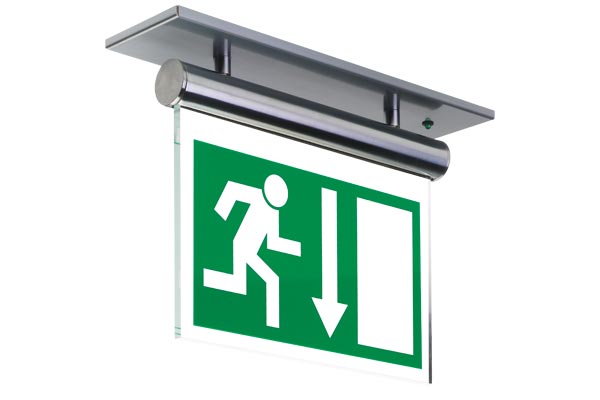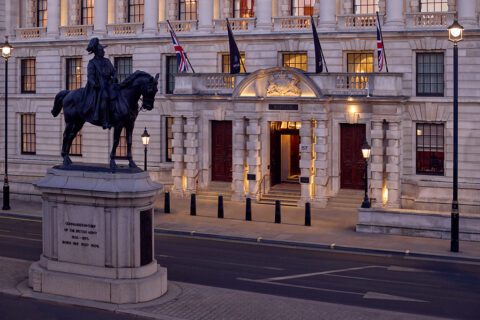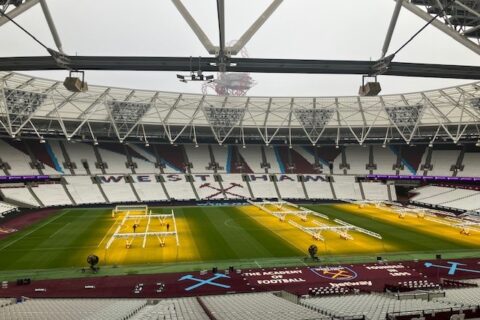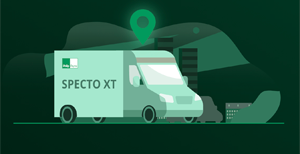Why Wireless?
The Specto-XT emergency lighting system uses luminaires containing wireless transceivers.
Specto-XT luminaires communicate the health status and routine test results to the Specto-XT Gateway and are uploaded onto the website. This avoids the need for supplementary data cabling which is required for most emergency lighting monitoring systems.
Specto-XT luminaires are wired with a permanent mains supply, eliminating the need for key switches or bus cabling.

Specto-XT uses a reliable 868MHz (and 922MHz in some countries) low power radio mesh network to communicate.
This technology is widely used in systems that are only required to communicate for a small percentage of time (limited to transmitting with an on time of less than 1%) and such systems are controlled by strict standards.
Other common applications for this type of technology include devices such as car key fobs and garage door opening systems. Such systems only operate in short bursts and are designed to be off, i.e., not transmitting 99% of the time.
How does Specto-XT reduce the likelihood of causing interference?
Fundamentally by being “radio silent” most of the time. Specto-XT emergency luminaires constantly log their own operational conditions 24-7 but the Gateway only requests that data to be collected once a day, starting at midnight.
This method again significantly limits radio traffic but does not restrict the eventual collection of data that has been effectively logged on these devices.
How does Specto-XT reduce the likelihood of being susceptible to other interference?
Specto-XT devices use an algorithm to check that data it has received is valid and not from other systems. In simple terms radio messages ready to be transmitted contain a data packet – effectively an extensive list of up to 256 bits with 65,536 combinations.
Our software applies a numeric calculation to these bits to create a unique number. When the message is transmitted, not only is the data transmitted but also the calculated unique number.
When the receiver decodes the message, it performs the same calculation on the data packet and checks that the unique number calculated matches – if it does the message is accepted, if not then the message is rejected as most likely emanating from another unrelated source.

This is called a CRC (cyclic redundancy check). When the Gateway requests data, it waits for a valid response. If the device does not respond, then it can repeat the message up to 5 times to ensure a valid message is returned.
Why use 868Mhz and 922 MHz?

Using 868Mhz low power radio has advantages over other common frequencies, such as 2.4GHz (Wi-Fi). It is a band that is reserved for low data devices and has strict limitations on transmission “on-time.”
868Mhz is longer wavelength than Wi-Fi, enabling enhanced
communication distance between devices and better signal penetration through materials found in the built environment.
What are the Transmission Distances for Specto-XT
Under ideal conditions, Specto-XT can transmit from one device to another, in line of sight, up to 100m. This distance will reduce depending upon the luminaire construction and building materials in its path.
The minimum we try to achieve is 30m which we consider ideal as the mesh network ensures other devices act as repeaters and there is always one close by.
Can I change the device’s transmission frequency?

Yes. The 868Mhz band is approved for use in Europe and the Specto-XT system can use up to 4 different channels (minor frequency changes within the band).
The same applies for the 922 band which is primarily for use in the USA and Australasia. Commissioning engineers can change the selected channel if required during set up, or thereafter.
Why does the Gateway communicate using 3G mobile telephone technology?

The Gateway uses this technology so that we do not have to connect to a user’s Wi-Fi, or Ethernet network. Such a connection could cause a potential security weakness into a customer’s secure network, and access would require authorisation from their IT department.
It also makes the lighting system dependent upon infrastructure not typically under a lighting engineer’s control and often not completed and ready when the contractor wants to complete the handover of the lighting.
Why do you use an infra-red transmitter to commission the luminaires?
Infra-red is very directional.
The Specto-XT programmer is a commissioning tool only and belongs in an electrician’s toolbox. During the commissioning process programming cannot be simpler as luminaires are easily selected and programmed into a group at the press of a button.
Other systems using radio communications during set up could equally communicate with a luminaire on the floor below rather than the intended luminaire in the room in which the engineer is working. This can make programming time consuming and complex, and often more than a one-man job.
Are the Gateway communications reliable?

The Gateway uses a roaming sim card enabling it to connect to the strongest signal available and is not dependent upon network provider. The Gateway should ideally be mounted within 5m of the building perimeter.












 SUSTAINABILITY
SUSTAINABILITY
 WARRANTY
WARRANTY
 WHY USE...
WHY USE...
 NEWS
NEWS







